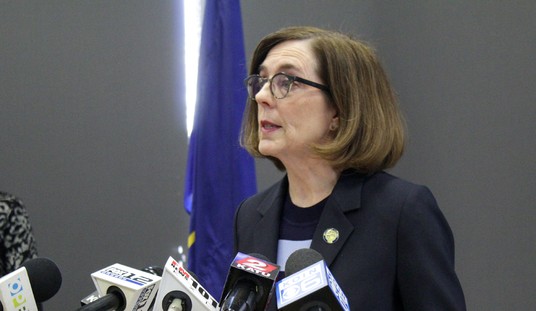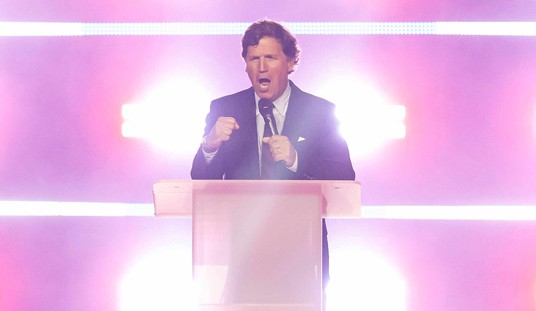Tell me you didn’t actually read the NYSRP v Bruen decision without saying you didn’t read the Bruen text. It’s one thing for commentators and pundits without legal degrees to overlook the clear text of a Supreme Court opinion in jumping to conclusions. It’s quite another to have an attorney working as a major media outlet’s “Chief Legal Analyst” to get this much wrong.
Here’s CNN’s Jeffrey Toobin, insisting that the Supreme Court just struck down all firearms restrictions in Bruen, before semi-correcting and saying that’s where the decision leads:
CNN Legal Analyst Jeffrey Toobin is not happy with SCOTUS' Second Amendment ruling. pic.twitter.com/SYP6kN0dbE
— Townhall.com (@townhallcom) June 23, 2022
TOOBIN: You know, we know that in the United States, you have the right under the First Amendment to say pretty much anything anywhere, because we have freedom of speech in the United States. What the conservatives on the Supreme Court are saying is that we want the Second Amendment to be a first-class right like the First Amendment. And we want to be able to carry guns anywhere, any time, without any sort of regulation by the government, without background checks, without restrictions on where you can take a weapon, without restrictions on how you can carry a weapon.
Now, they haven’t gone that far yet, but they are clearly moving in that direction. And, you know, we can’t separate this issue from what’s going on in the world, where we have a tremendous problem with gun violence in this country, we have mass shootings, we have 18-year-olds with access to AR-14s, 15s, and the Supreme Court is moving in the direction of saying the government cannot regulate that traffic at all.
Right off the bat, pun intended: What in the world is a “first class right” in constitutional terms? An enumerated constitutional right should have more weight than a derived right, but in this case the right to keep and bear arms is an enumerated right. There is literally no reference I can find in con-law discussions or anywhere else of a “first class right” in regard to the Constitution, and how an explicitly enumerated right would not qualify for that status.
So much for CNN’s legal commentary, eh? If I were inclined to use CNN’s own analogy here, I’d rate this as a four-bananas set of claims. Or perhaps more simply, it’s just bananas:
But let’s continue on regardless. Literally everything Toobin asserts here is not just wrong even in the speculative sense, but also entirely contradicted in the Bruen decision itself. Nothing in this decision strikes down any regulation except the “may issue” permit regime used in New York and five other states. In fact, in the concurrence from Justices Kavanaugh and Roberts, they explicitly note that none of this has an impact on “shall issue” permit laws that still restrict legal carrying of firearms:
IMPORTANT NOTE: The two-justice concurrence from Kavanaugh, joined by the Chief Justice, does place controlling limits on the decision, as their votes are necessary for the majority. Kavanaugh notes two limits of the court's decision: pic.twitter.com/B8WPdm8X2z
— Chris "Subscribe to my newsletter!" Geidner (@chrisgeidner) June 23, 2022
But even that isn’t much of a controlling limit, since Thomas’ opinion doesn’t negate regulations on the right to bear arms, including where and by whom. Justice Clarence Thomas explicitly makes the point that regulation can and does often pass constitutional muster and also explicitly cites time-and-place restrictions that are rationally based:
On the other hand, analogical reasoning requires only that the government identify a well-established and representative historical analogue, not a historical twin. So even if a modern-day regulation is not a dead ringer for historical precursors, it still may be analogous enough to pass constitutional muster.
Consider, for example, Heller’s discussion of “longstanding” “laws forbidding the carrying of firearms in sensitive places such as schools and government buildings.” 554 U. S., at 626. Although the historical record yields relatively few 18th- and 19th-century “sensitive places” where weapons were altogether prohibited—e.g., legislative assemblies, polling places, and courthouses—we are also aware of no disputes regarding the lawfulness of such prohibitions. See D. Kopel & J. Greenlee, The “Sensitive Places” Doctrine, 13 Charleston L. Rev. 205, 229–236, 244– 247 (2018); see also Brief for Independent Institute as Amicus Curiae 11–17. We therefore can assume it settled that these locations were “sensitive places” where arms carrying could be prohibited consistent with the Second Amendment. And courts can use analogies to those historical regulations of “sensitive places” to determine that modern regulations prohibiting the carry of firearms in new and analogous sensitive places are constitutionally permissible.
The problem, Thomas wrote, is that New York wanted to argue that any place where people congregate and law enforcement might be present is a “sensitive place,” which is so broad as to negate the constitutional right in question:
Although we have no occasion to comprehensively define “sensitive places” in this case, we do think respondents err in their attempt to characterize New York’s proper-cause requirement as a “sensitive-place” law. In their view, “sensitive places” where the government may lawfully disarm law-abiding citizens include all “places where people typically congregate and where law-enforcement and other public-safety professionals are presumptively available.” Brief for Respondents 34. It is true that people sometimes congregate in “sensitive places,” and it is likewise true that law enforcement professionals are usually presumptively available in those locations. But expanding the category of “sensitive places” simply to all places of public congregation that are not isolated from law enforcement defines the category of “sensitive places” far too broadly. Respondents’ argument would in effect exempt cities from the Second Amendment and would eviscerate the general right to publicly carry arms for self-defense that we discuss in detail below. See Part III–B, infra. Put simply, there is no historical basis for New York to effectively declare the island of Manhattan a “sensitive place” simply because it is crowded and protected generally by the New York City Police Department.
All of that could be easily found by simply reading Thomas’ actual ruling or the Kavanaugh/Roberts concurrence. But if it’s too difficult to slog through either one, Justice Samuel Alito made the boundaries of Bruen succinct:
Our holding decides nothing about who may lawfully possess a firearm or the requirements that must be met to buy a gun. Nor does it decide anything about the kinds of weapons that people may possess. Nor have we disturbed anything that we said in Heller or McDonald v. Chicago, 561 U. S. 742 (2010), about restrictions that may be imposed on the possession or carrying of guns.
All this ruling does is strike down the burden on the applicant for a carry permit and transfer it to the government to have a rational reason for denial. Bruen will require seven states and the District of Columbia to adopt the same “shall issue” policies on the books in most of the rest of the states. It doesn’t even require New York to adopt “constitutional carry” policies, but only requires them to issue permits without regard to justifications unless there are objective and rational reasons to reject an application for an individual.
As for Toobin’s “world we live in” comments, those aren’t the purview of the Supreme Court. But even if they were, Alito already had an answer for that as well:
Why, for example, does the dissent think it is relevant to recount the mass shootings that have occurred in recent years? Post, at 4–5. Does the dissent think that laws like New York’s prevent or deter such atrocities? Will a person bent on carrying out a mass shooting be stopped if he knows that it is illegal to carry a handgun outside the home? And how does the dissent account for the fact that one of the mass shootings near the top of its list took place in Buffalo? The New York law at issue in this case obviously did not stop that perpetrator.
What is the relevance of statistics about the use of guns to commit suicide? See post, at 5–6. Does the dissent think that a lot of people who possess guns in their homes will be stopped or deterred from shooting themselves if they cannot lawfully take them outside?
The dissent cites statistics about the use of guns in domestic disputes, see post, at 5, but it does not explain why these statistics are relevant to the question presented in this case. How many of the cases involving the use of a gun in a domestic dispute occur outside the home, and how many are prevented by laws like New York’s?
The dissent cites statistics on children and adolescents killed by guns, see post, at 1, 4, but what does this have to do with the question whether an adult who is licensed to possess a handgun may be prohibited from carrying it outside the home? Our decision, as noted, does not expand the categories of people who may lawfully possess a gun, and federal law generally forbids the possession of a handgun by a person who is under the age of 18, 18 U. S. C. §§922(x)(2)–(5), and bars the sale of a handgun to anyone under the age of 21, §§922(b)(1), (c)(1).
Again, nothing in Bruen authorizes a free-for-all carry by everyone everywhere at all times. Nor does it even suggest that the court is “moving in the direction of saying the government cannot regulate that traffic at all.” Perhaps in the future, CNN will hire a “chief legal analyst” who bothers to read court rulings before leaping to speculative conclusions. Or perhaps CNN just enjoys going bananas.








Join the conversation as a VIP Member